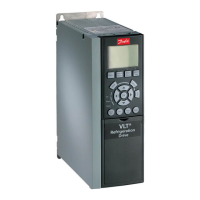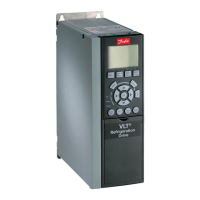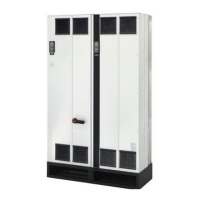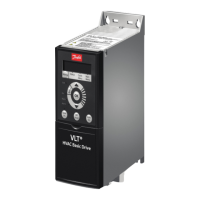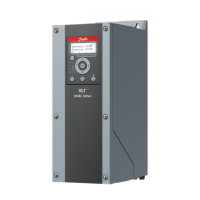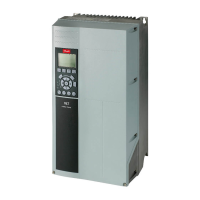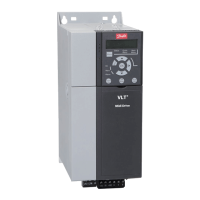20-96 PID Di. Gain Limit
Range: Function:
5* [1 - 50 ] The dierential function of a PID
controller responds to the rate of
change of the feedback. As a result,
an abrupt change in the feedback
can cause the dierential function
to make a large change in the PID
controller output. This parameter
limits the maximum eect that the
PID controller dierential function
can produce. A smaller value
reduces the maximum eect of the
PID controller dierential function.
This parameter is only active when
parameter 20-95 PID Dierentiation
Time is not set to OFF (0 s).
3.19 Parameters: 21-** Main Menu -
Extended Closed Loop
The VLT
®
HVAC Drive oers 3 extended closed-loop PID
controllers in addition to the PID controller. These can be
congured independently to control either external
actuators (valves, dampers, and so on) or be used with the
internal PID controller to improve the dynamic responses
to setpoint changes or load disturbances.
The extended closed-loop PID controllers may be intercon-
nected or connected to the PID closed-loop controller to
form a dual loop
conguration.
To control a modulating device (for example a valve
motor), this device must be a positioning servo motor with
built-in electronics accepting either a 0–10 V (signal from
analog I/O card MCB 109) or a 0/4–20 mA (signal from
control card and/or general purpose I/O card MCB 101)
control signal.
The output function can be programmed in the following
parameters:
•
Control card, terminal 42: Parameter 6-50 Terminal
42 Output (setting [113]...[115] or [149]...[151], Ext.
Closed Loop 1/2/3
•
General purpose I/O card MCB 101, terminal
X30/8: Parameter 6-60 Terminal X30/8 Output,
(setting [113]...[115] or [149]...[151], Ext. Closed
Loop 1/2/3
•
Analog I/O card MCB 109, terminal X42/7...11:
Parameter 26-40 Terminal X42/7 Output,
parameter 26-50 Terminal X42/9 Output,
parameter 26-60 Terminal X42/11 Output (setting
[113]...[115], Ext. Closed Loop 1/2/3
General purpose I/O card and analog I/O card are optional
cards.
3.19.1 21-0* Extended CL Autotuning
The extended closed-loop PID controllers can each be
auto-tuned, simplifying and saving time during commis-
sioning, while ensuring accurate PID control adjustment.
To use PID auto-tuning, congure the relevant extended
PID controller for the application.
Use a graphical LCP to react on messages during the auto-
tuning sequence.
Enabling auto-tuning, parameter 21-09 PID Autotuning puts
the relevant PID controller into PID auto-tuning mode. The
LCP then provides on-screen instructions.
PID auto-tuning introduces step changes and then
monitors the feedback. Based on the feedback response,
the following required values are calculated:
•
PID proportional gain.
- Parameter 21-21 Ext. 1 Proportional Gain
for EXT CL 1.
- Parameter 21-41 Ext. 2 Proportional Gain
for EXT CL 2.
- Parameter 21-61 Ext. 3 Proportional Gain
for EXT CL 3.
•
Integral time.
- Parameter 21-22 Ext. 1 Integral Time for
EXT CL 1.
- Parameter 21-42 Ext. 2 Integral Time for
EXT CL 2.
- Parameter 21-62 Ext. 3 Integral Time for
EXT CL 3.
The PID dierentiation time is set to 0 in the following
parameters:
•
Parameter 21-23 Ext. 1 Dierentation Time for EXT
CL 1.
•
Parameter 21-43 Ext. 2 Dierentation Time for EXT
CL 2.
•
Parameter 21-63 Ext. 3 Dierentation Time for EXT
CL 3 are set to value 0 (zero).
•
Parameter 21-20 Ext. 1 Normal/Inverse Control for
EXT CL 1.
•
Parameter 21-40 Ext. 2 Normal/Inverse Control for
EXT CL 2.
•
Parameter 21-60 Ext. 3 Normal/Inverse Control for
EXT CL 3.
These calculated values are presented on the LCP and can
either be accepted or rejected. Once accepted, the values
are written to the relevant parameters, and PID auto-
tuning mode is disabled in parameter 21-09 PID Autotuning.
Parameter Descriptions
VLT
®
HVAC Drive FC 102
188 Danfoss A/S © 10/2019 All rights reserved. M0010001
33
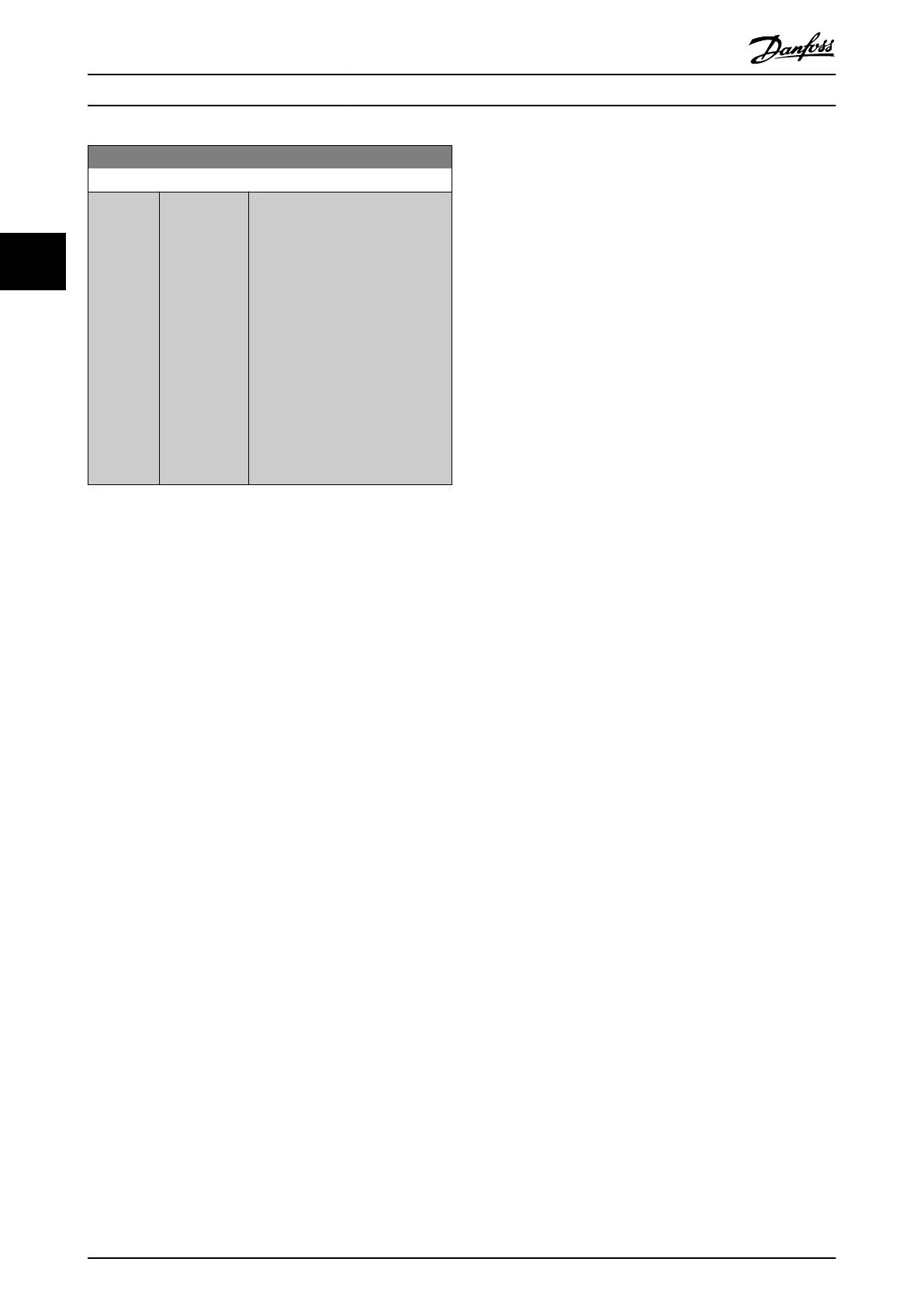